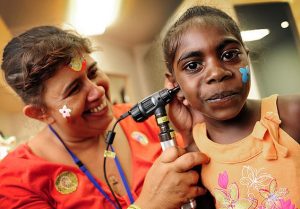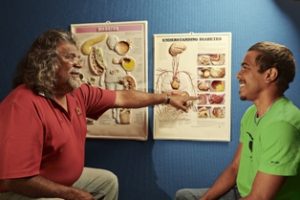
According to the Close the Gap report card, local Aboriginal people are twice as likely to be hospitalised for endocrine diseases and four times as likely for renal dialysis.
But there has been some progress in the south west region.
Especially since the introduction six years ago of the Integrated Team Care (ITC) program which improves access to chronic disease services for Aboriginal and Torres Strait Islander people.
“The ITC program provides culturally appropriate primary care services including but not limited to general practice and allied health to further enhance our well established Aboriginal Chronic Care program,” says Nathan Jones, the director of South Western Sydney Local Health District (SWSLHD) Aboriginal health unit.
“While the growth in our services is encouraging, there’s still work to be done,’’ he said in the wake of the allocation of an additional $1.2 million for ITC.
Mr Jones said the program was aimed at addressing the disparities in health care.
“The funding boost has enabled us to hire three additional care coordinators, Aboriginal health workers and a service manager to ensure our staff can continue to identify and share best practice in meeting the needs of Aboriginal people with chronic diseases,” Mr Jones said.
The ITC program has been delivered across the region since 2011 by South Western Sydney Primary Health Network (PHN), which will now support the SWSLHD Aboriginal Chronic Care team in continuing to improve services for Aboriginal families and communities.
Rene Pennock, the CEO of South Western Sydney PHN said the program offered a range of practical steps and real solutions.
[social_quote duplicate=”no” align=”default”]“The ITC program is a fantastic initiative and we are proud to have the opportunity to fund the program and support the local health district in continuing to deliver effective health solutions for Aboriginal and Torres Strait Islander people,” Mr Pennock said.[/social_quote]
Justin Duggan, the SWSLHD general manager of primary and community health, said that the initiatives are working and positive change is happening but there’s still a long way to go.
“The smoking rate in pregnancy for Aboriginal women in south western Sydney has decreased from 48 per cent in 2011 to 36.3 per cent in 2015.
“However we would like to see it decrease even further,” Mr Duggan said.
“Today the rate of Aboriginal children fully immunised at 12 months is almost on par with that of non-Aboriginal children.’’
“The rate of Aboriginal children fully immunised at the age of five is equal with non-Aboriginal children and sits at 94 per cent,” Mr Duggan said.




